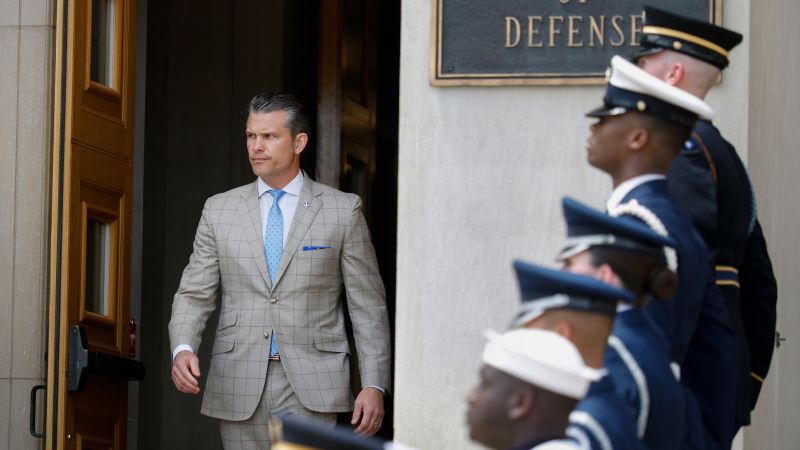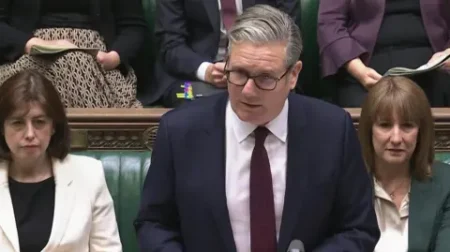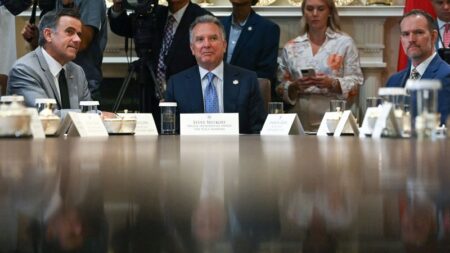The recent decision by Secretary of Defense Pete Hegseth to authorize a pause on weapons shipments to Ukraine has created significant upheaval within the U.S. government. Five sources with direct knowledge of the situation revealed that Hegseth did not inform the White House prior to instituting this pause last week. This lack of communication initiated a rush within the Biden administration to quickly assess the implications of the halt and to clarify the decision to both Congress and the Ukrainian officials, showcasing a serious breakdown in the policy-making process at the Pentagon.
President Donald Trump, during a Cabinet meeting, attempted to distance himself from the decision, emphasizing that he had no prior knowledge of the pause when questioned by reporters. He responded ambiguously, asserting only that the U.S. commitment to sending defensive weapons to Ukraine would remain intact while deflecting inquiries about who authorized the suspension. This incident highlights not only a lack of cohesive strategy but also an apparent disconnect between various branches of the administration regarding critical national security matters.
This situation was not unprecedented, as it marks the second time within the year that Hegseth halted U.S. arms transfers to Ukraine, once again catching senior national security officials off-guard. The first occurrence took place in February and resulted in a swift reversal. Similar to recent events, Trump later publicly announced that shipments would resume, despite Hegseth’s initial decision to pause them. This reflects an ongoing pattern of haphazard decision-making within the Trump administration’s defense policy, where decisions on military aid lack coordinated support and transparency.
It has been reported that key figures involved in U.S. relations with Ukraine, such as U.S. special envoy to Ukraine Retired General Keith Kellogg and Secretary of State Marco Rubio, were also kept in the dark about the pause prior to its public revelation. They discovered it through news reports rather than direct communication from the Pentagon. Pentagon spokesperson Kingsley Wilson justified the situation by stating that Hegseth was merely establishing a framework for President Trump to assess military aid and manage existing stockpiles. However, the lack of collaboration raised questions about how such critical decisions are made concerning military assistance.
As the situation escalated, Trump instructed Hegseth to quickly reinstate the shipment of interceptor missiles for Patriot air defense systems, which are vital for the protection of civilians in Ukraine from ongoing Russian missile and drone assaults. The munitions, primarily already positioned in Poland, could have been rapidly transferred to Kyiv, indicating that logistical preparations were already in motion long before the decision to pause shipments was made.
The Pentagon’s notification to resume shipments came late Monday night after Trump publicly asserted earlier in the day that Ukrainians require increased defense support. He continued to stress the bravery of Ukrainians in operating the U.S.-supplied weaponry, despite rising concerns over the adequacy of military aid amidst the ongoing conflict with Russia.
Interestingly, sources indicated that Trump’s frustration with Russian President Vladimir Putin has grown as peace negotiations remain elusive, causing him to reassess the strategy concerning military aid to Ukraine. This pivot made him less likely to grant Russia what could be perceived as a victory through the suspension of U.S. arms supplies.
The decision to initially pause shipments, it appears, stemmed from requests within the Pentagon for a review of U.S. arms stockpiles amidst growing tensions in the Middle East rather than a direct order from Trump. Undersecretary of Defense for Policy Elbridge Colby, known for his skepticism regarding extensive military aid to Ukraine, played a pivotal role in recommending the pause, a move that was subsequently approved by Deputy Secretary of Defense Steve Feinberg.
Despite the complex bureaucratic entanglements surrounding this decision, the administration has yet to convincingly articulate to Congress or the public an urgent need that would justify such unilateral action, raising doubts about the validity of the reasons behind the pause. Congressional staffers have reportedly expressed a willingness to collaborate with the Pentagon if evidence of significant stockpile shortages was presented, but were informed that no such steps had been taken.
In conclusion, the ongoing turmoil concerning U.S. military aid to Ukraine encapsulates the broader disarray within the Trump administration related to foreign policy execution. As key players continue to navigate this crisis, the ramifications of these decisions will significantly impact the U.S.’s standing on the international stage and the ongoing conflict in Ukraine.











